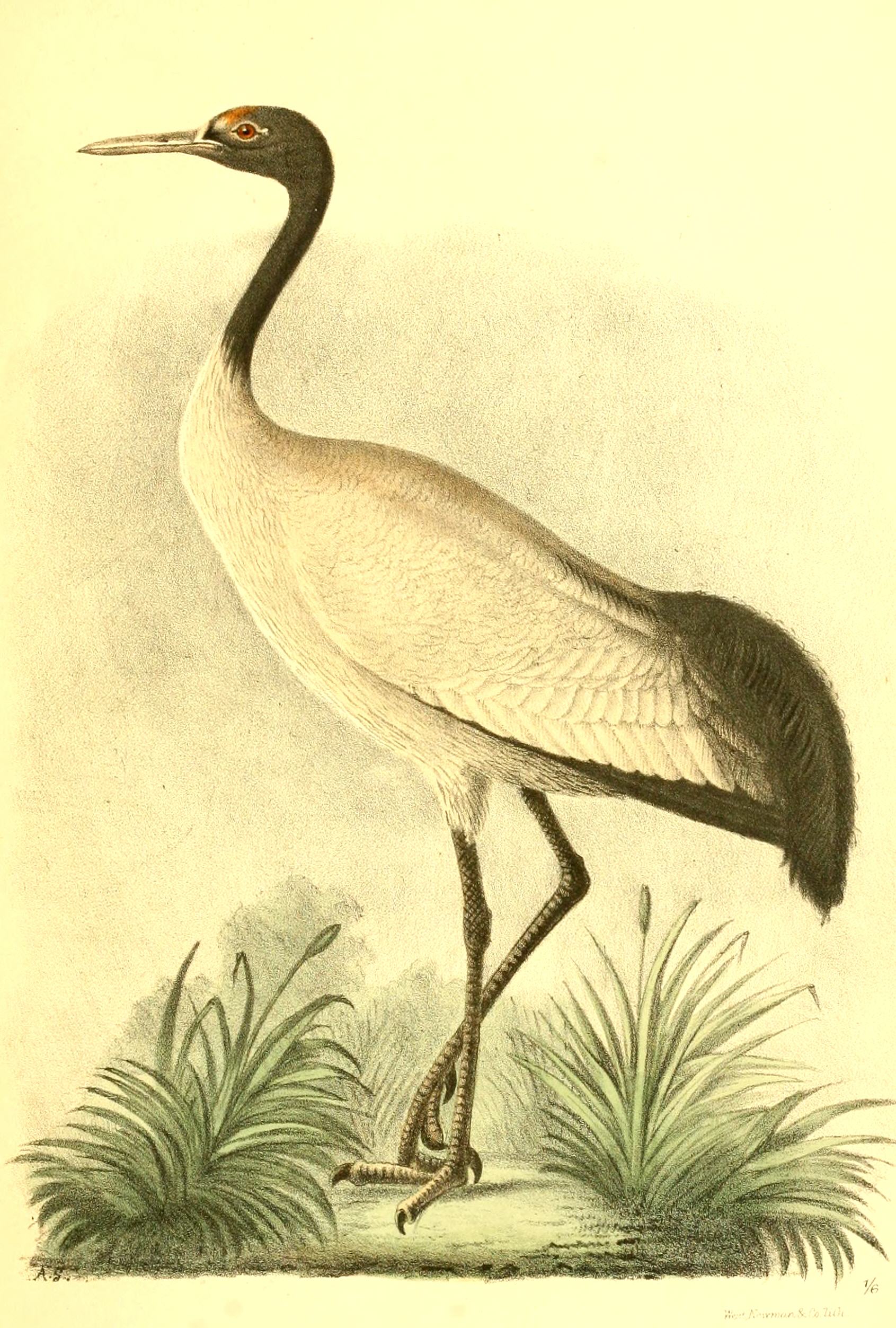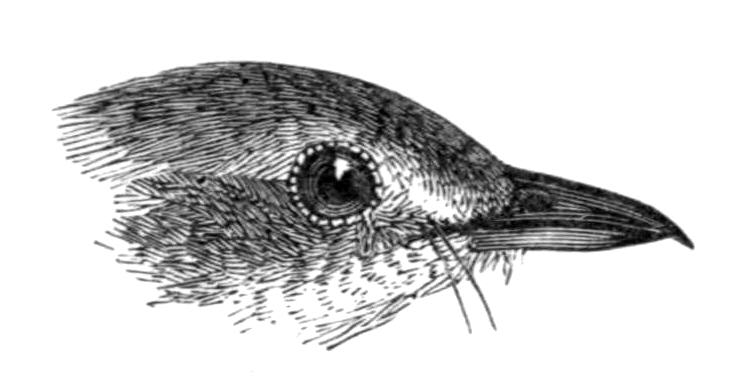|
S. A. Hussain
Syed Abdulla Hussain (13 August 1944 – 30 December 2009) was an Indian ornithologist. He is best known for the work he undertook at the Bombay Natural History Society (BNHS) along with Salim Ali. A species of frog '' Nyctibatrachus hussaini'' from Kudremukh near his home, was named after him but the species name later became embroiled in controversy. Hussain was born in Karkala, near Mangalore (then a part of the Madras Presidency) where his father Syed Hussain was a noted lawyer. His early education was at Basti Mission School and obtained a university degree in science from Sri Bhuvanendra College at Karkala. He applied for a field research position in the Bird Migration study project of the Bombay Natural History Society and although he had no formal education in zoology, Salim Ali found him very observant and accepted him. Hussain accompanied Ali on numerous expeditions and later conducted surveys on his own. Hussain became assistant curator of the BNHS in 1979, a senior ... [...More Info...] [...Related Items...] OR: [Wikipedia] [Google] [Baidu] |
Karkala
''Karkala'' also known as Karla in Tulu language, is a town and the headquarters of Karkala taluk in the Udupi district of Karnataka, India. Located about 60 km from Mangalore in the Tulu Nadu region of the state,it lies near the foothills of the Western Ghats.Karkala has a number of natural and historical landmarks, and is a major tourist and transit destination due to its strategic location along the way to Hebri, Sringeri, Kalasa, Horanadu, Udupi, Kollur, Subrahmanya and Dharmasthala. Etymology Black granite is abundant in the area, and used widely in the local architecture. Hence, the name of the town is derived from ''kari-kal'', meaning black stone. There is still a place called as 'Kariya Kall' in the city which means 'Black Rock' in Tulu and Kannada languages. The name 'Kariya Kall/ ಕರಿಯಕಲ್ಲ್' changed to 'Karikal/ಕರಿಕಲ್' and eventually to 'Karkal/ಕರ್ಕಲ್/ಕಾರ್ಕಳ್'. However, some studies assert that the or ... [...More Info...] [...Related Items...] OR: [Wikipedia] [Google] [Baidu] |
Brown-winged Kingfisher
The brown-winged kingfisher (''Pelargopsis amauroptera'') is a species of bird in the subfamily Halcyoninae. It is found along the north and eastern coasts of the Bay of Bengal, occurring in the countries of Bangladesh, India, Malaysia, Myanmar and Thailand. In India, it has been mainly reported from the Sundarbans region but records from further south near Chilka exist. Its natural habitat is subtropical or tropical mangrove forests. References brown-winged kingfisher Birds of Bangladesh Birds of Myanmar Sundarbans brown-winged kingfisher The brown-winged kingfisher (''Pelargopsis amauroptera'') is a species of bird in the subfamily Halcyoninae. It is found along the north and eastern coasts of the Bay of Bengal, occurring in the countries of Bangladesh, India, Malaysia, Myanmar ... Taxonomy articles created by Polbot {{Coraciiformes-stub ... [...More Info...] [...Related Items...] OR: [Wikipedia] [Google] [Baidu] |
Black-necked Crane
The black-necked Crane (''Grus nigricollis'') is a medium-sized crane in Asia that breeds on the Tibetan Plateau and remote parts of India and Bhutan. It is 139 cm (55 in) long with a 235 cm (7.8 ft) wingspan, and it weighs 5.5 kg (12 lbs). It is whitish-gray, with a black head, red crown patch, black upper neck and legs, and white patch to the rear of the eye. It has black primaries and secondaries. Both sexes are similar. Some populations are known to make seasonal movements. It is revered in Buddhist traditions and culturally protected across much of its range. A festival in Bhutan celebrates the bird while the Indian union territory of Ladakh has designated it as the state bird. Description This medium-sized crane is mostly grey with a black head and neck. The lores and crown are naked and dull red. A small patch of white feathers are present below and behind the eye. The tail is black and makes it easy to distinguish at a distance from the si ... [...More Info...] [...Related Items...] OR: [Wikipedia] [Google] [Baidu] |
Phodilus Badius
The Oriental bay owl (''Phodilus badius'') is a type of bay owl, usually classified with barn owls. It is completely nocturnal, and can be found throughout Southeast Asia and parts of India. It has several subspecies. It has a heart-shaped face with earlike extensions. The Congo bay owl (''Phodilus prigoginei'') was formerly classified as a subspecies of Oriental bay owl due to insufficient knowledge, but it has turned out that it might not even belong to the same genus. The Sri Lanka bay owl was also considered a subspecies. A population of this species has apparently become extinct on Samar Island in the Philippines during the 20th century. It was described as ''Phodilus badius riverae'' and was only ever known from a single specimen, which was lost in a bombing raid in 1945. The validity of this taxon is uncertain; it is usually synonymized with the nominate subspecies (for reasons of biogeography) or the subspecies ''saturatus'' (from external appearance); it might be a dist ... [...More Info...] [...Related Items...] OR: [Wikipedia] [Google] [Baidu] |
Allan Octavian Hume
Allan Octavian Hume, CB ICS (4 June 1829 – 31 July 1912) was a British civil servant, political reformer, ornithologist and botanist who worked in British India. He was the founder of the Indian National Congress. A notable ornithologist, Hume has been called "the Father of Indian Ornithology" and, by those who found him dogmatic, "the Pope of Indian Ornithology". As an administrator of Etawah, he saw the Indian Rebellion of 1857 as a result of misgovernance and made great efforts to improve the lives of the common people. The district of Etawah was among the first to be returned to normalcy and over the next few years Hume's reforms led to the district being considered a model of development. Hume rose in the ranks of the Indian Civil Service but like his father Joseph Hume, a radical member of parliament, he was bold and outspoken in questioning British policies in India. He rose in 1871 to the position of secretary to the Department of Revenue, Agriculture, and Commerce und ... [...More Info...] [...Related Items...] OR: [Wikipedia] [Google] [Baidu] |
Apis Dorsata Laboriosa
''Apis laboriosa'', the Himalayan giant honey bee, is the world’s largest honey bee; single adults can measure up to in length. Before 1980, ''Apis laboriosa'' was considered to be a subspecies of the widespread ''Apis dorsata'', the giant honey bee, but in 1980 and for almost 20 years thereafter it was elevated to the rank of a separate species. It was classified once again as a subspecies of ''Apis dorsata'' by Engel in 1999, but was confirmed as a full species in 2020 on the basis of co-occurrence with ''Apis dorsata'' at many sites with no sign of interbreeding. It is highly adapted to its highland habitat in behavior. Taxonomy Recent research has removed ''laboriosa'' from inclusion within ''A. dorsata'', as a separate species, with supporting evidence including a significant region of sympatry. ''A. laboriosa'' is hardly distinct morphologically from the nominate subspecies of ''dorsata'' (darker abdomen, longer thoracic hair) but has different housekeeping and swarmi ... [...More Info...] [...Related Items...] OR: [Wikipedia] [Google] [Baidu] |
Vespa Mandarinia
The Asian giant hornet (''Vespa mandarinia'') or northern giant hornet, including the color form referred to as the Japanese giant hornet, is the world's largest hornet. It is native to temperate and tropical East Asia, South Asia, Mainland Southeast Asia, and parts of the Russian Far East. It was also found in the Pacific Northwest of North America in late 2019 with a few more additional sightings in 2020, and nests found in 2021, prompting concern that it could become an invasive species. There were no confirmed sightings at all in 2022, however, by the end of the season in November, suggesting the wasps may have been eradicated. Asian giant hornets prefer to live in low mountains and forests, while almost completely avoiding plains and high-altitude climates. ''V. mandarinia'' creates nests by digging, co-opting pre-existing tunnels dug by rodents, or occupying spaces near rotten pine roots. It feeds primarily on larger insects, colonies of other eusocial insects, tree sap, an ... [...More Info...] [...Related Items...] OR: [Wikipedia] [Google] [Baidu] |
Yellow-rumped Honeyguide
The yellow-rumped honeyguide (''Indicator xanthonotus'') is a sparrow-sized bird in the honeyguide family that is found in Asia, mainly in montane forests along the Himalayas. They are very finch-like but the feet are strong and zygodactyl, with two toes facing forward and two backward. They perch on honeycombs and feed on wax. Males tend to be territorial and stay near honeycombs while females and juveniles forage widely. They are brood parasites, laying their eggs in the nests of tree-hole breeders, possibly barbets. Description The yellow-rumped honeyguide is sparrow sized and has a stout finch-like bill. The plumage is largely dusky olive and the forehead and lores are orange while the upper plumage. There is a streaked appearance to the wing feathers. The rump is deep orange and extends into the back grading to sulphur yellow. The chin and throat are yellowish while the lower plumage is pale grey with dark streaks. The bill is yellow but dark towards the tip. Females have le ... [...More Info...] [...Related Items...] OR: [Wikipedia] [Google] [Baidu] |
Rhyticeros Undulatus
The wreathed hornbill (''Rhyticeros undulatus'') is an Old World tropical bird of the hornbill family Bucerotidae, also called bar-pouched wreathed hornbill due to its distinctive blue-black band on its lower throat sac. It is named after its characteristic long, curved bill that develops ridges, or wreaths, on the casque of the upper mandible in adults. Males are black with a rufous crown, a white upper breast and face, and a yellow featherless throat. Females are uniformly black with a blue throat and are slightly smaller than males. The wreathed hornbill ranges across the foothills and evergreen forests of Northeast India and Bhutan to Bangladesh, Southeast Asia and the Greater Sunda Islands. It is a frugivore and feeds mainly on large fruits, which it swallows whole leaving the seeds intact. This feeding behaviour plays an important ecological role for the long-distance seed dispersal in forest ecosystems. The wreathed hornbill is threatened by hunting, habitat fragmentation ... [...More Info...] [...Related Items...] OR: [Wikipedia] [Google] [Baidu] |
Rhyticeros Plicatus
Blyth's hornbill (''Rhyticeros plicatus''), also known as the Papuan hornbill, is a large hornbill inhabiting the forest canopy in Wallacea and Melanesia. Its local name in Tok Pisin is ''kokomo''. Previously, this hornbill was placed in the genus ''Aceros''. It has often been lumped with the plain-pouched hornbill (''R. subruficollis''), and sometimes considered to include the Narcondam hornbill (''R. narcondami'') and the wreathed hornbill (''R. undulatus'') as subspecies. The common name commemorates Edward Blyth (1810–1873), English zoologist and Curator of the Museum of the Asiatic Society of Bengal. Description Up to in length, the adult male has mainly black plumage with a golden or orange-buff head, white throat and a white tail. Its irises are reddish brown, and the eye is surrounded by naked pale blue skin. The female is a smaller, mainly black bird with a white throat and tail. Both sexes have a very large horn-coloured bill and casque. Young birds of both sexes ... [...More Info...] [...Related Items...] OR: [Wikipedia] [Google] [Baidu] |
Narcondam Hornbill
The Narcondam hornbill (''Rhyticeros narcondami'') is a species of hornbill in the family Bucerotidae. It is endemic to the Indian island of Narcondam in the Andamans. Males and females have a distinct plumage. The Narcondam hornbill has the smallest home range out of all the species of Asian hornbills. Description The Narcondam hornbill is a small hornbill at long. The sexes differ in plumage. The male has a rufous head and neck, black body and upper parts glossed with green. Females are all black. There is a bluish white throat patch and the tail is white in both sexes. Both sexes have a bill with a few folds on the upper side towards the base of the upper mandible. The skin around the eye is bluish. The iris of the male is orange red while the female has an olive brown with a pale yellow ring. The bill is waxy and the furrows of the casque are brownish. The bill is pinkish towards the base. The legs are black and the sole is yellow. Taxonomy The species was described by A ... [...More Info...] [...Related Items...] OR: [Wikipedia] [Google] [Baidu] |
Broad-tailed Grassbird
The broad-tailed grassbird (''Schoenicola platyurus'') is a species of Old World warbler in the family Locustellidae. It is endemic to the Western Ghats of India with a possibility of occurrence in Sri Lanka. A small, mostly brown bird, it has a broad rounded and graduated tail. It is found only on the higher altitude grassy hills where it usually skulks, except during the breeding season when males fly up into the air to sing in their display. The species is believed to be a resident although it is possible that they make local movements. Description The uniform brown upperparts with a broad, round-tipped and long graduated tail are distinctive features of this bird. The species has a buff supercilium and the brown tail has thin dark bars. The underside of the tail is very dark and the feathers are tipped with white. Males and females are indistinguishable in plumage. The call of the male during breeding is a lark-like and repeated trill that is accompanied by fanned tail and a ... [...More Info...] [...Related Items...] OR: [Wikipedia] [Google] [Baidu] |







.jpg)

